The valley of Viñales is located in Sierra de los Órganos, Pinar del Río, the westernmost province of Cuba. The area was declared a World Heritage site by Unesco in 1999, and in 2001 it became a National Park.
We bring you ten attractions from this natural and cultural wonder that will guarantee you a fantastic time if you´re planning on booking an excursion to Viñales.
1. The Mogotes, Viñales´ distinctive hillocks
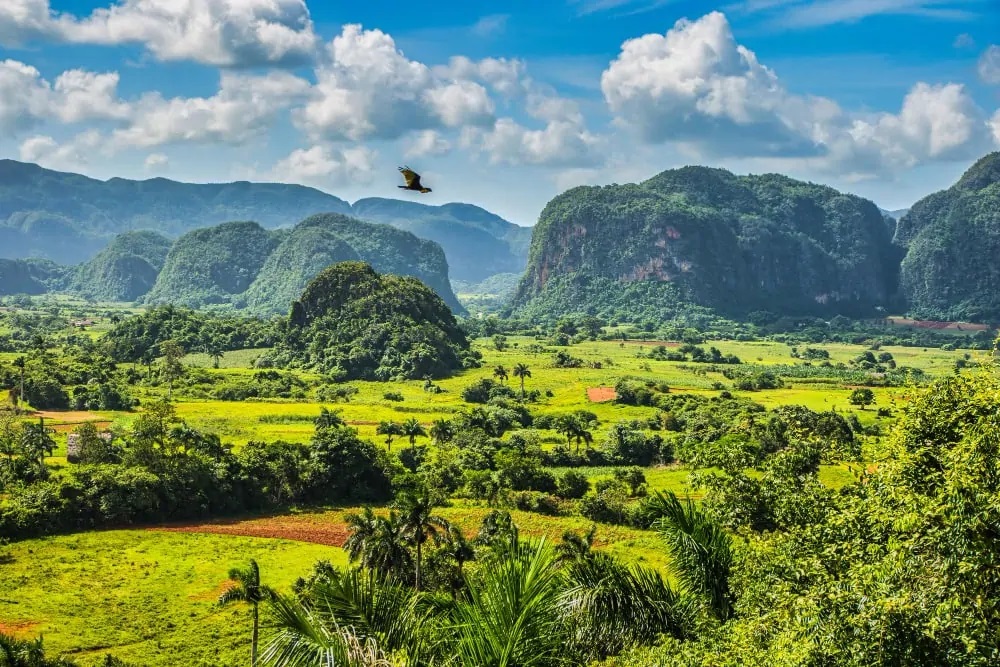
These renowned elevations rise up to almost 80 feet over the karstic depression of Viñales National Park and are particular of this landscape. The exhuberant vegetation all around displays an intense emerald green and the palm trees all around offer a sensational view of the valley. This, along with the whistling wind in the most silent moments of the day, can give off the appearance of a place that could very well be still in prehistoric times.
The most spectacular scenery can be appreciated from the lookout point at Los Jazmines hotel, though the mountain ranges all around are just as good a place as any to capture the splendor in the air, especially at sundown, when the vibrant colors of dusk in the tropic melt with the shadows of the Cuban countryside.
2. Zipline in the canopy
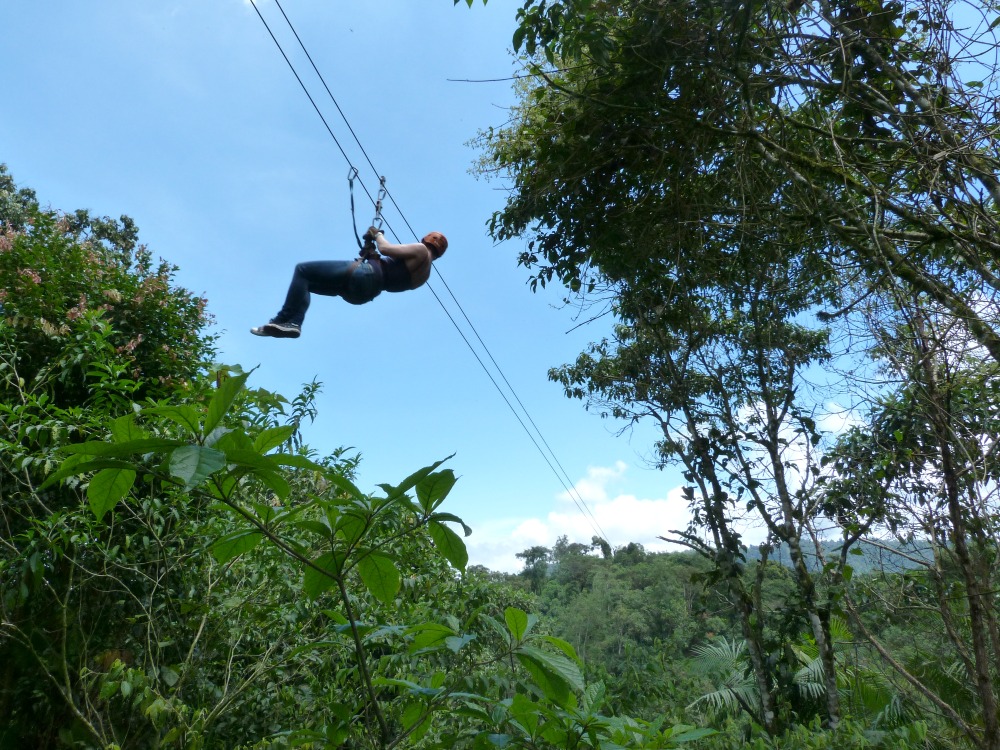
The canopy is located on the outskirts of the valley and for those who enjoy physical activity, a little adrenaline rush and spectacular views, it is a must. Surrounded by magnificent scenery, you, your family and friends will enjoy the zip line that stretches over the National Park deemed of great Heritage value.
3. The wildlife
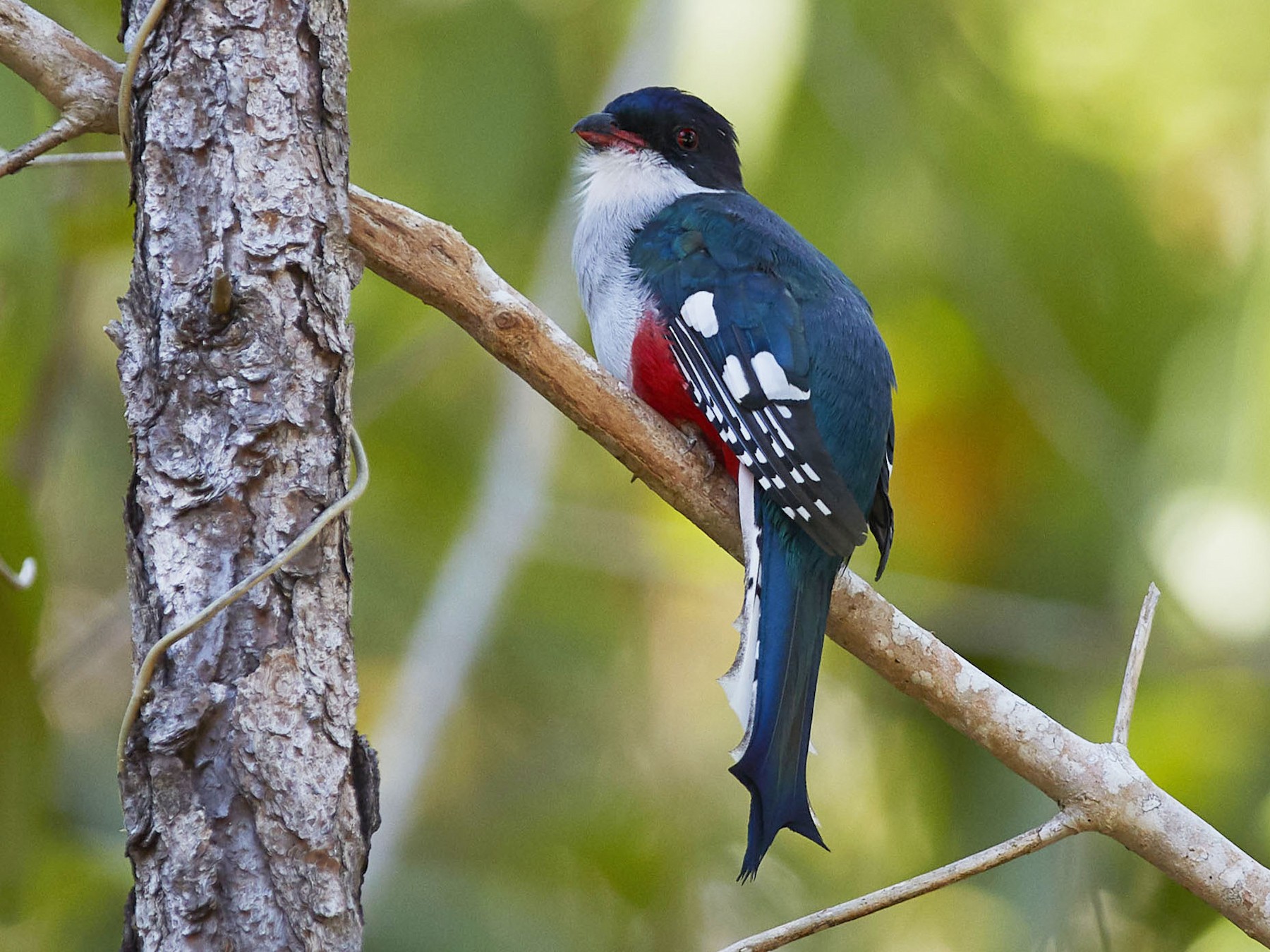
Among the charms that you can appreciate not only from atop a hill, but also on walks along the plains, you will find the extremely diverse wildlife that Viñales shelters, as the park is home to more than a hundred endemic species of Cuba among specimens of flora and fauna, some as emblematic as the tocororo (in the image above), Cuba´s national bird, and the cork palm. You can also see many reptiles, amphibians, birds, trees and shrubs that are under the safeguard of the area's study and conservation programs.
4. Plantations
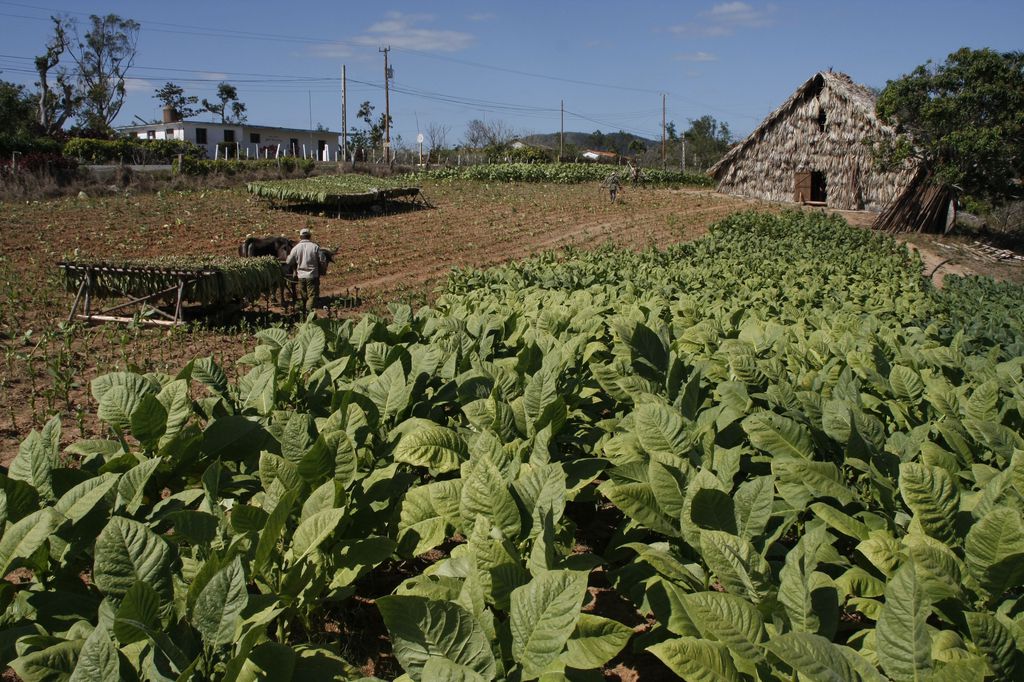
The province of Pinar del Río is known for being the largest tobacco-growing area in Cuba, and within it Viñales gets a very special mention for the quality of its lands and the time-honored tradition of tobacco leaf farming.
On your trip to Viñales, you will surely visit not only tobacco plantations, but also coffee plantations, and you will have the chance to taste both products that the locals make in artisanal fashion. They will also offer you honey, rum and guarapo, all of which are just as authentically Cuban. The latter is another by-product of the sugar cane, very refreshing and alcohol-free, famous for its sweet and herbal flavor.
5. Casa del Veguero: where the leaves become art
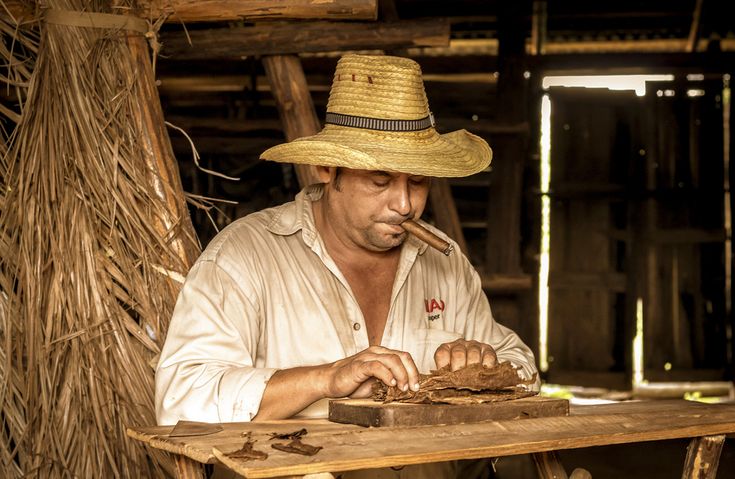
Since we were talking about tobacco in the previous point, the Casa del Veguero complements the visit to the plantations because you can get a specialized look at the next phase of the tobacco elaboration process: how the leaves are selected, cured, stored and prepared to form a cigar of unmatched signature. This visit is most rewarding during the first half of the year, when the growing cycle and weather conditions allow you to observe the entire process in a more practical way..
6. Cueva del Indio
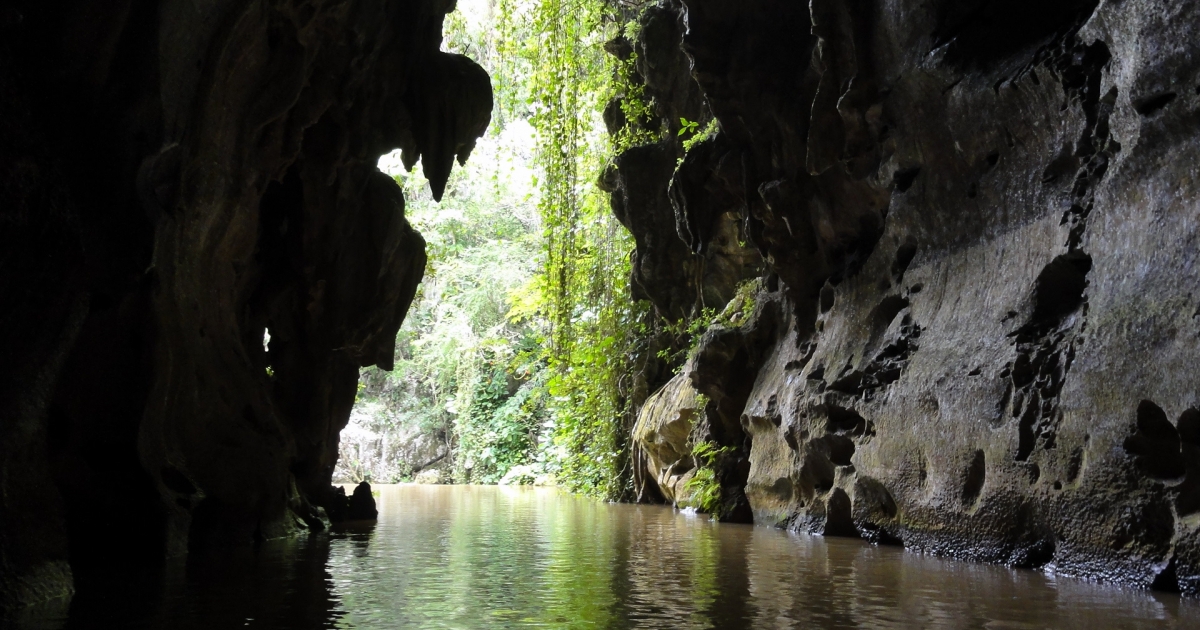
Viñales National Park is also home to several of the most important cave systems in the country, among them the Cueva del Indio, or "Indian´s Cave", refered to as such because it is an ancient indigenous habitat, home to rock paintings and archeological sites that have presented findings of pre-Columbian cultures.
Two rivers flow through the Cueva del Indio; one of them shares the name with the nearby town of San Vicente. You can travel along this river by motorboat, covering a large part of the cave, which is artificially lit to better appreciate the subterranean wonders of western Cuba.
7. Caverna de Santo Tomás
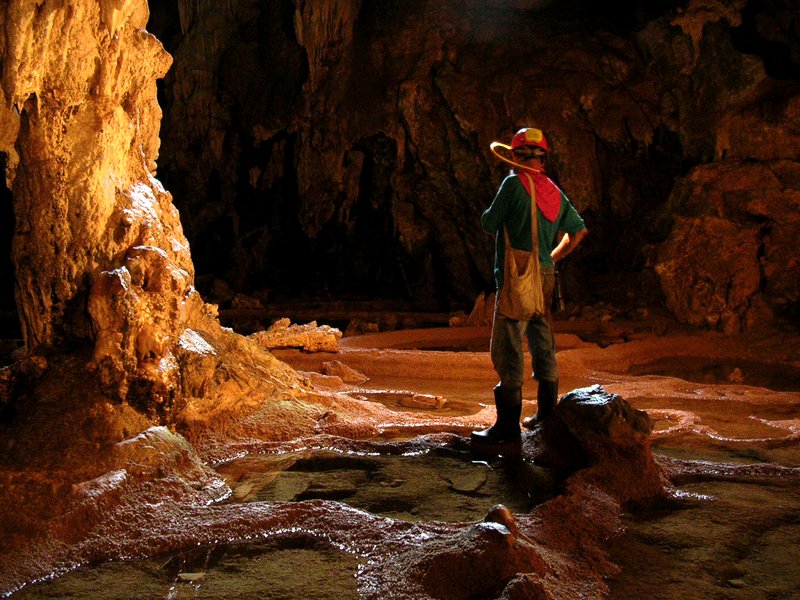
For those who wish to go a step further in underground exploration, the true speleological jewel is the Santo Tomás Cavern, located 20 km west of Viñales -a little farther down the road, but you´ll have no issues finding transportation- which stands out for being the largest cave system in Cuba and one of the most impressive in insular Central America with 46 km in length.
Not only will you be captivated by its magnitude, but also by the traces left by nature and mankind. On the one hand, the irregularity of the rock formations inspires awe; on the other, you will learn about the communities of African and indigenous slaves who settled inside the enclosure fleeing from the plantations. The cavern's vibrant history of "cimarronajes" endows it with a rich cultural heritage.
8. Horseback riding, of course
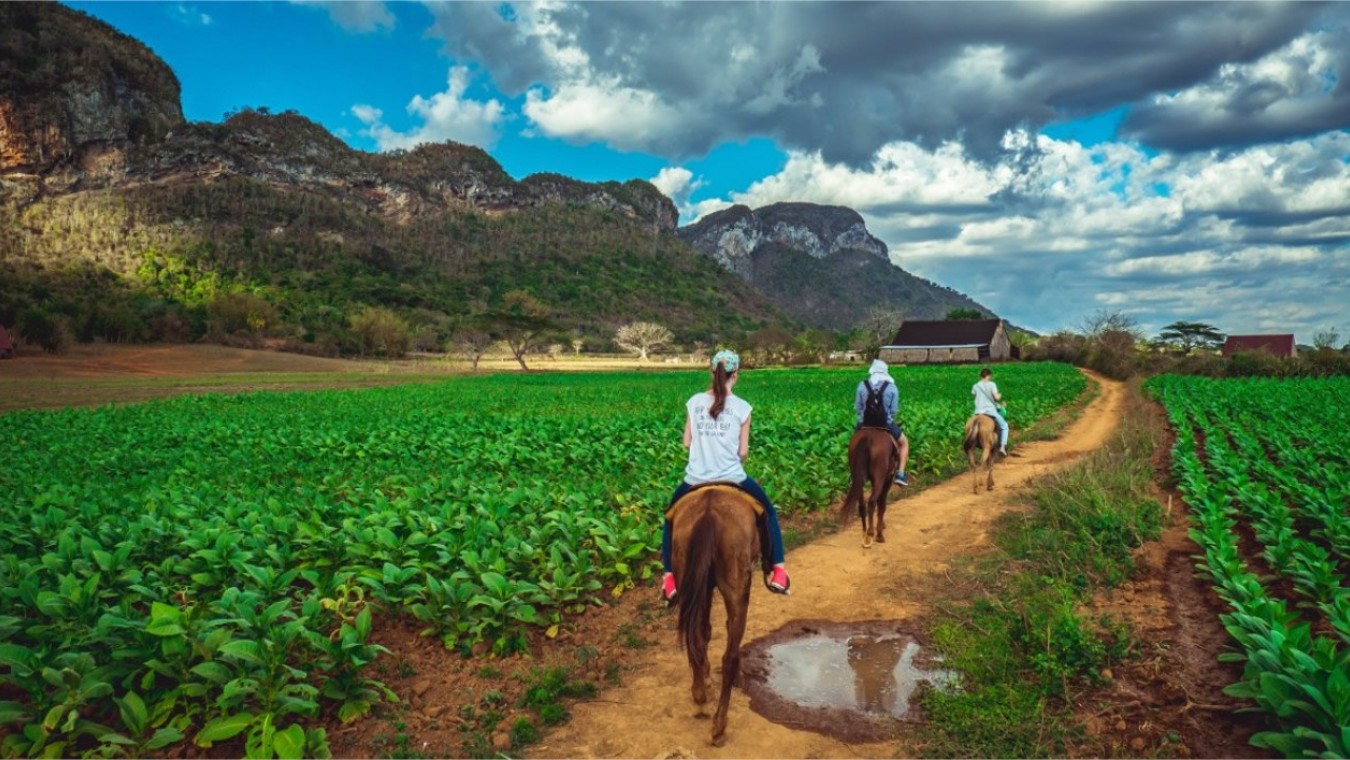
Time to readjust the pupils to the sunlight. Several spots in the area offer horseback rides on graceful specimens. Little is said about the short distance between reality and magic in this regard, which ranges as few as a couple of feet above the ground.
El famoso novelista cubano Alejo Carpentier contó en sus crónicas una anécdota sobre vacaciones de juventud en el campo. En ella contó que todo cuanto veía, palpaba y sentía se le hacía como un sueño. Confesó que de adulto repitió los viajes, pero que le faltaba algo concerniente a la cuestión de perspectiva. Hasta que, como cuando joven, en medio de la espesura tropical, cabalgó sobre un corcel: todo ese tiempo la pieza ausente había sido andar a cuestas de la criatura para sentirse a tono con el medio, a la distancia del suelo que consideraba “la propicia” para admirar la riqueza de sus alrededores, como sus antepasados habían hecho desde que arribaron a estas tierras cálidas, al ver en el caballo el medio predilecto para andar valles y bosques de Cuba.
You just have to check it out for yourself when the opportunity presents itself.
9. Visit to a farmer´s house
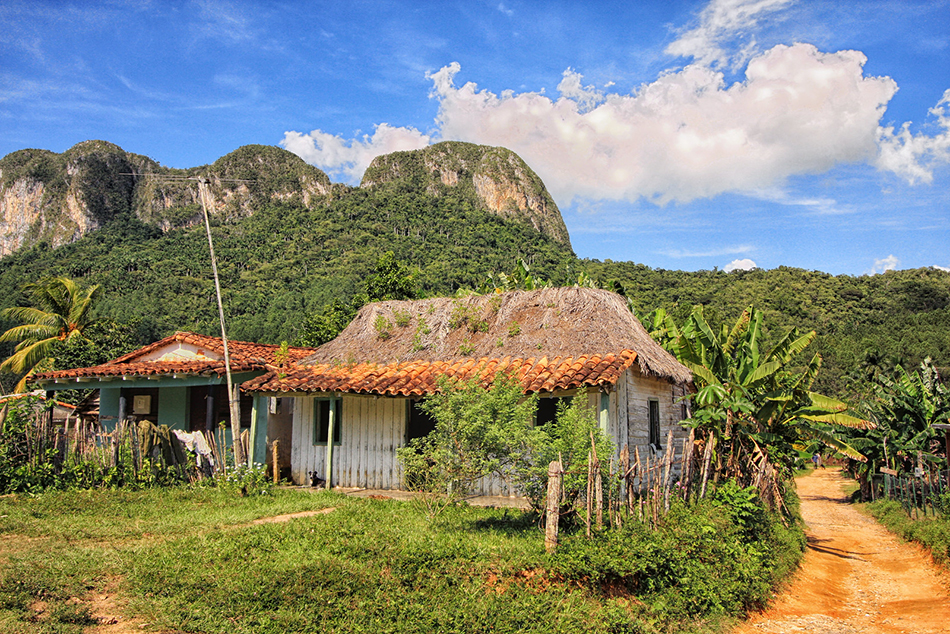
After enough trotting, a break seems quite in order. The farmer is an essential part of the Cuban identity in any of the stages of its history. In addition to representing a key element of rural tradition, the guajiro, as he is popularly known in the country, is associated with values of sobriety, hard work and camaraderie. You will surely see this when you take part of a guided visit to the house of one of the land workers in the area, who will along with his family welcome and tend to you, willing to engage in a jovial exchange with travelers from all over the world. Who knows, they may even give you the pleasure of sampling freshly brewed coffee or lighting up a cigar past lunchtime.
10. Traditional Cuban food
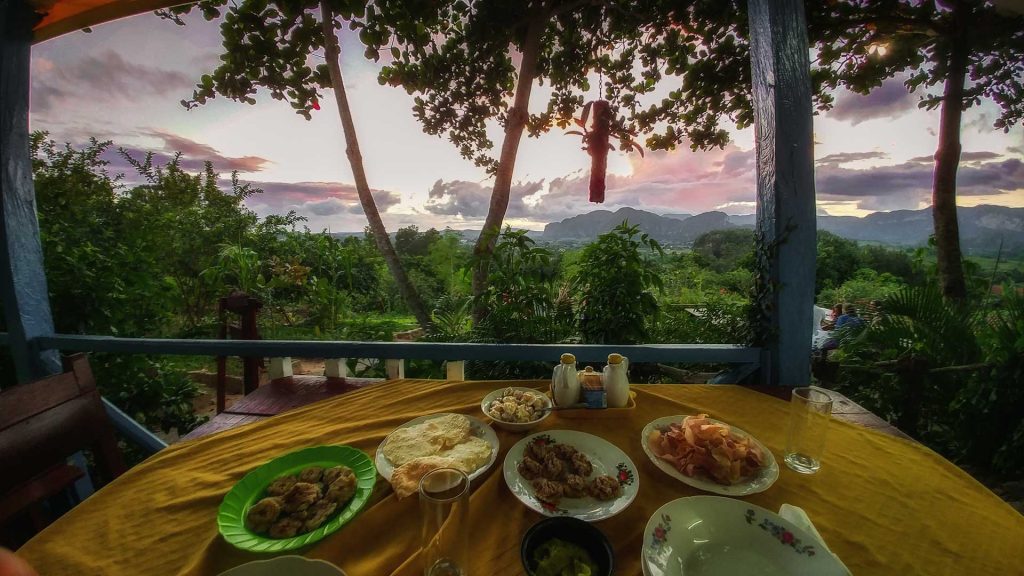
And speaking of lunch, the Cuban countryside is associated with a very characteristic flavor. Whether it is slices of pork and congrí rice, yucca with mojo (pronounced moho), ropa vieja or picadillo a la criolla, the mixture of spices and aromas plus the preparation of these dishes in the outdoors will nourish body and soul, connecting the traveler with the culture of the place through the palate.
If you are planning to come to Cuba soon, you can guarantee each of these attractions by booking the excursions to Viñales with San Cristóbal.
Or, for a complete and detailed experience, this time with a special offer, book your stay in Havana + the best of Adventure and Tradition in Viñales and Soroa clicking the link below: estadía en La Habana + lo mejor de la Aventura y la Tradición en Viñales y Soroa.

